Interior design for well-being
Why Does Interior Surrounding Matter for Our Well-being and Health
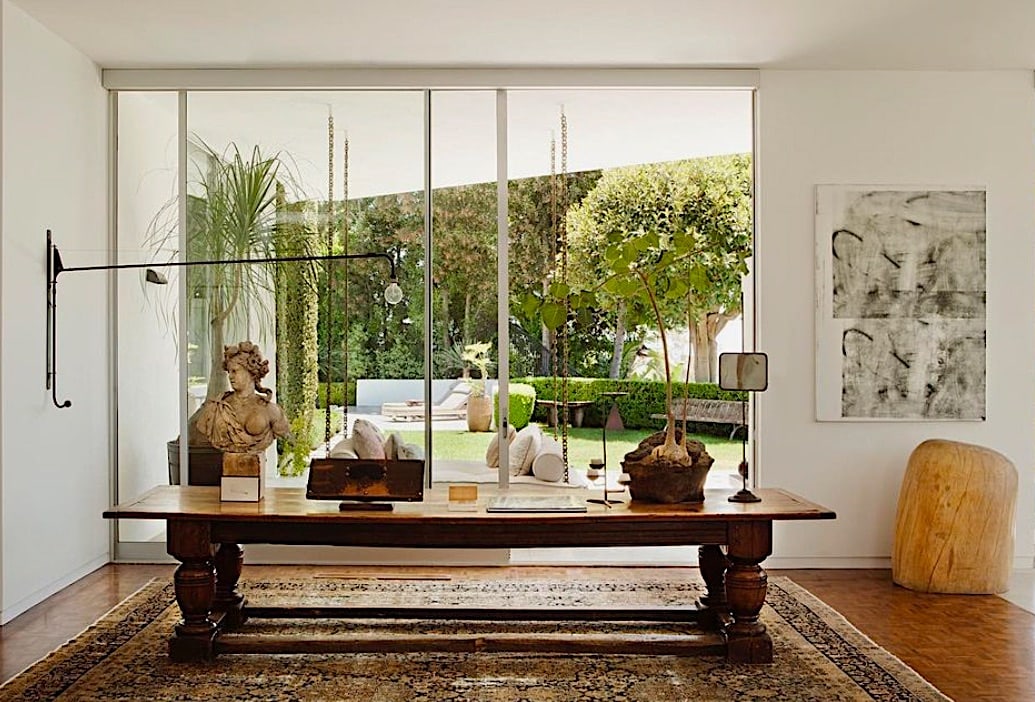
A corner of a property in Los Angelis defined by authenticity and understated luxury. The airy space with white walls and ceiling is grounded by the earthy ochre-brown floor and rug colours and a massive 18th century English refectory table. Original antique and contemporary artworks complete the picture-like window view of a sleek green garden. It would be a pleasure to work or linger in this space… or just to walk by. Interior design by Kathleen and Tommy Clements of Clements Design. Photo credit: @clementsdesign
Formally stiff or artistically capricious, we have seen many styles, movements and trends in the history of interior design: from styles tightly reflecting socio-economic developments to those that follow fashion and even seasonal trends, celebrating designers’ signature styles, or the notion “Anything goes in design”.
Thanks to the findings of environmental psychology, neuroscience and cognitive science in recent times, designing person-centred and well-being-enhancing interior environments has received more and more attention.

Spacious and calming living room in a London property. The muted, harmonious colour palette is only interrupted by the yellow curtains enhancing the light flooding through the windows. Interior design by Michael Smith Inc. Photo credit: @michaelsmithinc.
Scientific research in the fields of environmental psychology and particularly the psychology of interior design as its subsection has proven that any choice we make in selecting furnishings, colours, lighting, art and decorative objects for our home affects our senses. Consequently, our mind-and-body responses to such triggers alter our emotions, thoughts, mood and behaviour. This means that a thoughtfully curated interior design with characteristics in accordance with the needs and desires of the residents can contribute to pleasant experiences and make a home a healthier place to live.
It’s time to elevate our living space to a higher level. This means interior design should not only meet aesthetic and functional requirements, and our home should not only reflect who we are but much more, our interior surroundings have to stimulate who we want to be and the goals we want to reach. This key point focuses on our well-being and further growth.
It is rather like the development of our attitude towards conscious nutrition, where we have realised that the quality of food we consume and not how full we feel is more important. In terms of fashion, we have come to an understanding to put sustainability, labour conditions and the environmental footprint of the clothes we wear at the forefront. In the same way, we are gradually beginning to see the importance of sensitively customised, person-centred interior spaces that are tuned to the psychological and physical needs of the individuals living or working there and so beneficially influence their well-being and health.
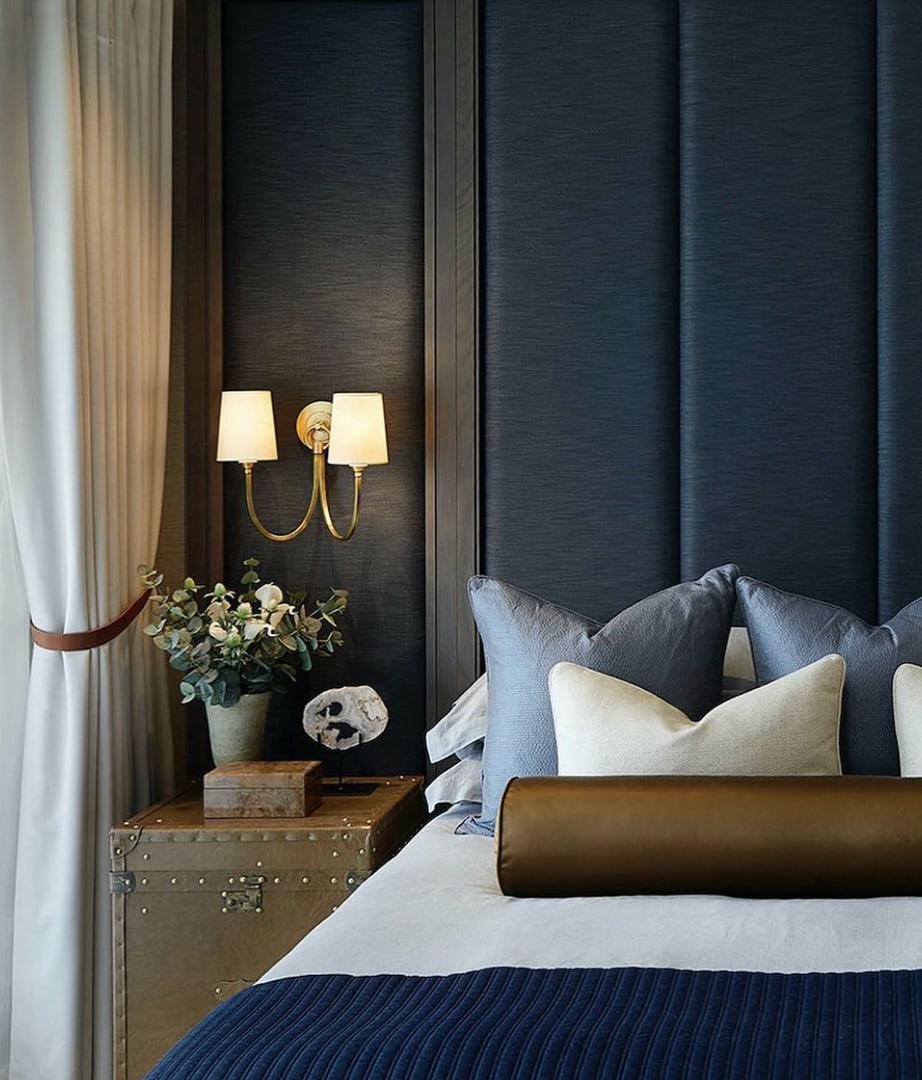
Humans still have a deeply innate mental trait, called prospect and refuge, originating from our prehistoric ancestors. Imagine their home, a cave positioned in a way that they can’t be easily seen but can overlook and control their surroundings. This ancient configuration gives humans a feeling of security, and it is just as relevant in contemporary homes. To have prospect and refuge means to feel a solid wall behind your back when you are sitting or behind your head when you are lying down. Windows and doors are positioned in your line of sight. Pictured: The impressive headboard in this elegant bedroom provides a calming mental effect of security. Interior design by Laura Hammett Interiors. Photo credit: @laurahammett.interiors.
In her book Healing Spaces: The Science of Place and Well-Being (Harvard University Press, 2010), M.D. Esther Sternberg explored the logically linked chain of physical surroundings > sensory experiences > brain > immune system > health, concluding that our environment can make us sick or heal us. “How we perceive the world around us, its features of light and dark, sound and smell, temperature and touch, feed into the brain through our senses and trigger the brain’s emotional centers, which make us react. These emotional centers release nerve chemicals and hormones that can change how immune cells fight disease”.
The good news is that the notion of the environmental impact in its natural, man-made and social presence on the human psyche shifts increasingly from theoretical and empiric research to effective application in the practices of many more architects and interior designers. However, there is a long way to go until we put first not the beautiful appearance of a space but rather primary value the positive impact of an interior on the humans who inhabit it. In this light, we can understand the words of the great master Philippe Starck: “We have to replace beauty, which is a cultural concept, with goodness, which is a humanist concept.”
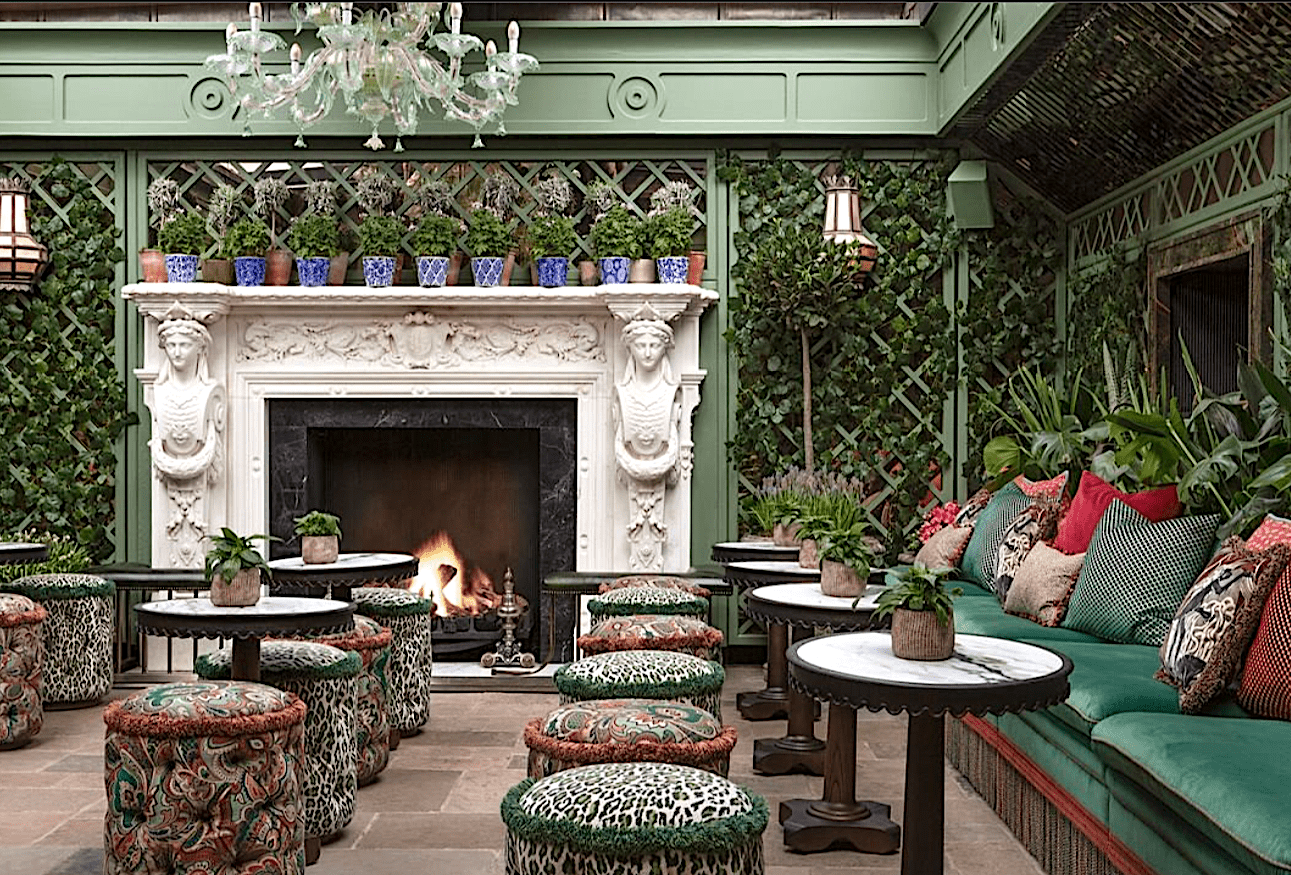
The English designer Martin Brudnizki is an unparalleled master of awesome interior settings. His creations always evoke a wow effect while remaining inviting and cosy. Effortlessly exuberant, they present rather mundane features merged in an extraordinary way and often set in unexpected places. On the smoking terrace at Annabel’s pictured here, an abundance of plants, animal and floral fabric prints, all mainly in greens and browns, two of the colours mostly found in Nature, are juxtaposed with a neoclassical fireplace in radiant white. The majestic mantelpiece is decorated with tiny terracotta and blue and white plant pots typical of a rustical Meditterrian coast. Photo credit: @m_b_d_s_. Why are we fascinated by the designer’s creations, from London’s Annabell’s to Zurich’s Baur’s, to name a few? We love them because they are human-centred and true to their purpose deep in their foundations. Martin Brudnizki implies biophilic design principles in his creations, and therefore, even the more extravagant ones remain human. They connect us with the beloved Nature through innate prototypes of humans’ past or desires.
A meaningfully personalised interior design can effectively contribute to a positive mood and feeling well in any room at any time. When our mood is bright and cheerful, our thoughts are more optimistic and broad-ranging, and we generally become better at problem-solving. In addition, we are more creative, react flexibly, behave adequately, and feel at ease with ourselves and others. This leads to an improved function of our immune system and, respectively, to better well-being and health.
Especially in cases of health disorders, sensitively personalised interior design can actively support all other therapies and measurements. For example, the home of a person who suffers from social anxiety has to be designed very differently from the home of a hyperactive person; designing a dining room for a person struggling with weight and a person suffering from embolism needs a completely different approach.
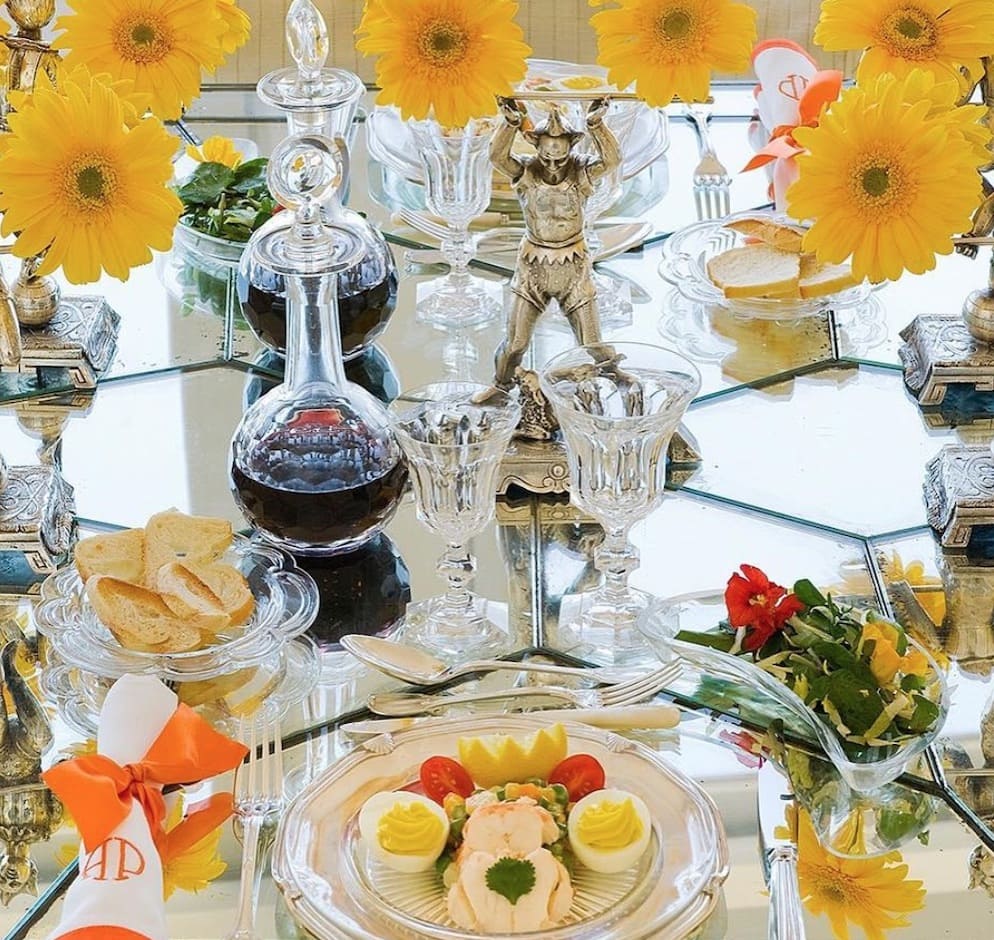

There are many possible ways to suppress or boost appetite through interior design means. For example, scientific research has found that the colour purple can act as an appetite suppressor while warm colours like orange and yellow act instead as appetisers. Pictured: A joyful table setting decorated in yellow and orange by Alberto Pinto Agency. Photo credit: @albertopintoagency (first image). A stylishly refined table setting in purple hues by Alex Papachristidis. Photo credit: @alexsviewpoint (second image).
The coordination and flow between architectural, interior, and, if applicable, landscape measures are essential for reaching a holistic environmental impact. It is, of course, advantageous if the design of a room starts with the construction of the building and considers the needs and desired perspectives of the occupant(s) from the outset. It is then possible to determine such vital points as the compass orientation of the windows, window views, and floor plan location of key rooms. These essential points include access to shared spaces as well as securing privacy, perception of silence and noise, sunlight and daylight exposure. A lot can also be done when redesigning a space to suit the occupant’s needs. In this case, the focus is on choosing the right colours, shapes, textures, light sources, etc., which benefit the desired goals of the inhabitant(s). Small and mobile objects like art and decorative pieces, surface colour splashes, and plants and flowers can change the overall look to the desired ambience. In any case, the aim of a person-centred design is not the beauty or uniqueness of an interior for itself but how this design serves the human using it.
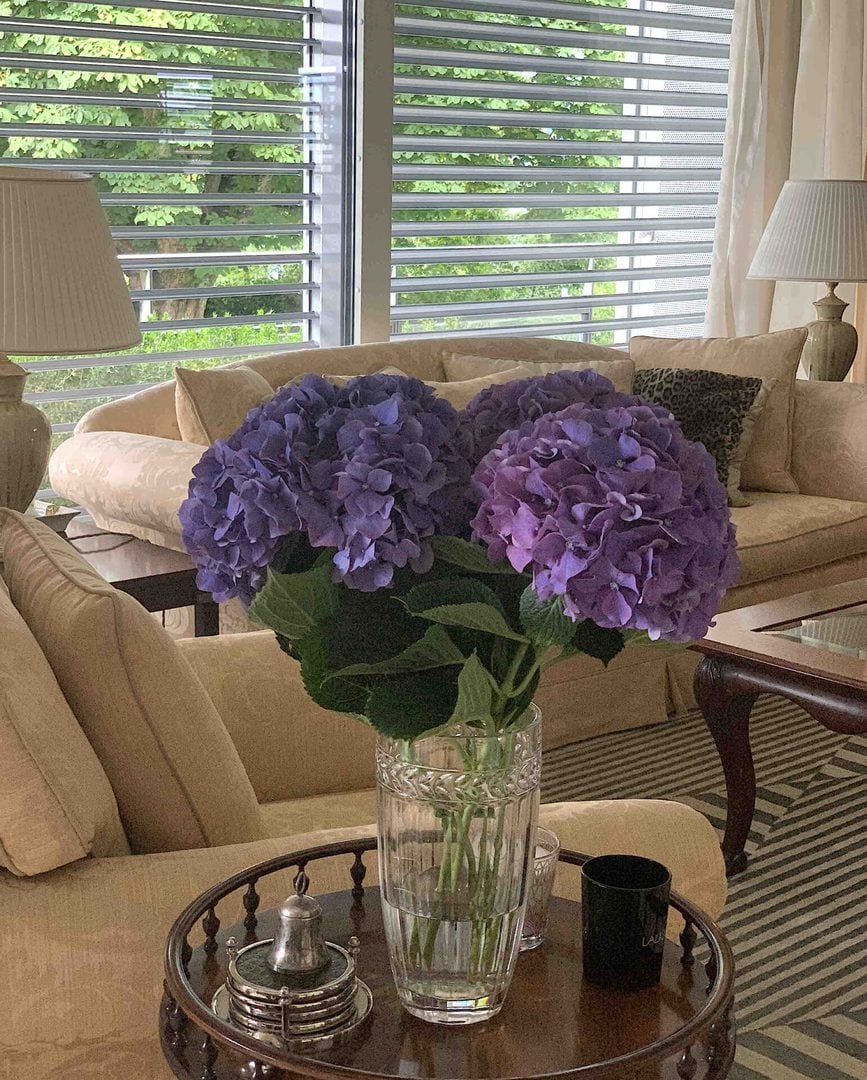
A bunch of flowers has the power to change the mood of a room. Interior design by Nelly Zafirov Designs.
